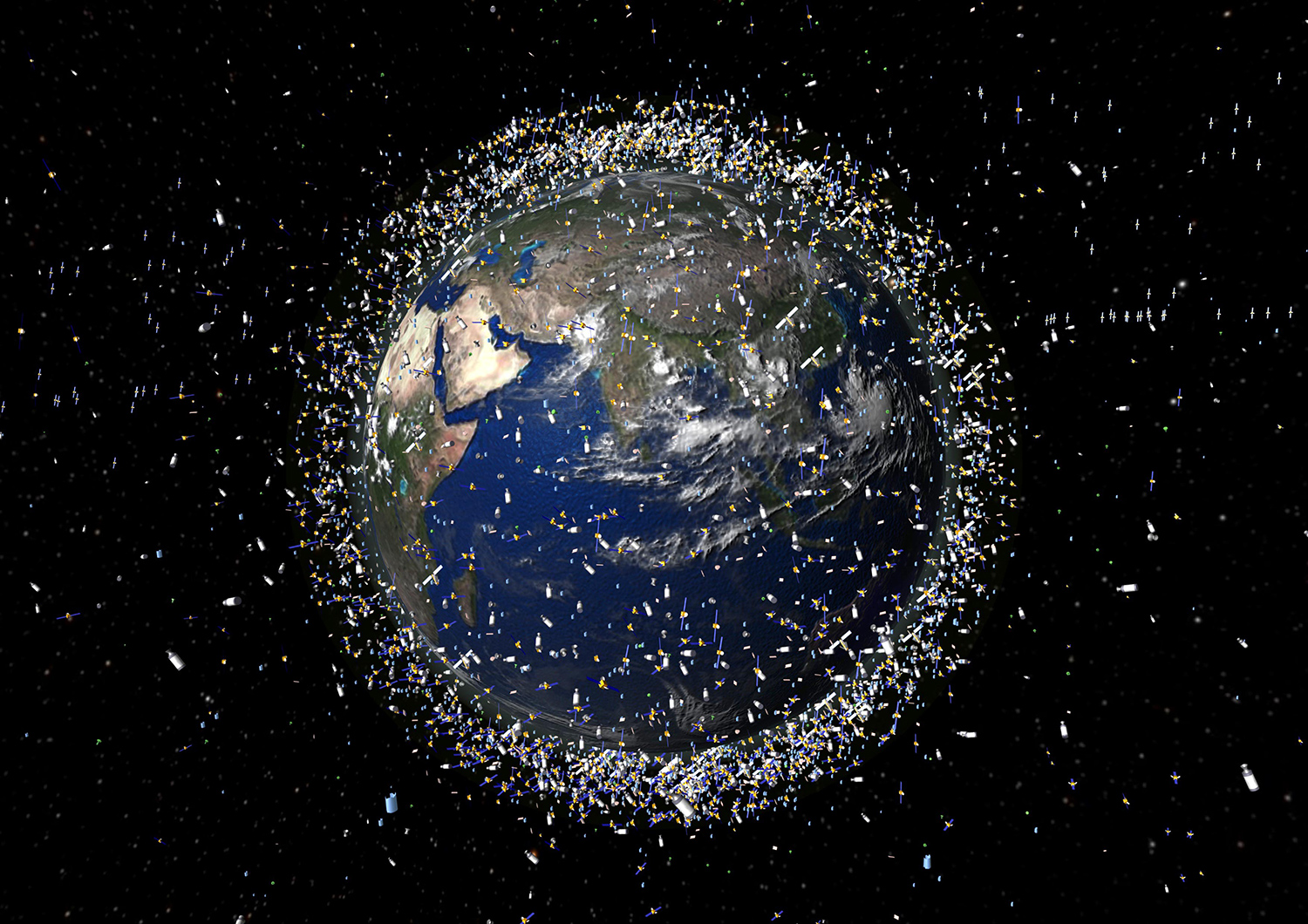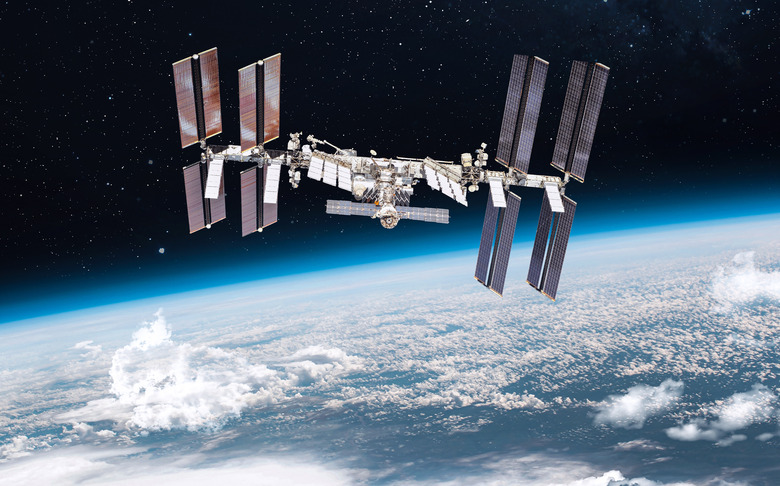The ISS Just Dodged A Satellite That Entered Its Orbit
Astronauts have occupied the International Space Station since 2000. Since its launch, the ISS has continued to circle our planet, oftentimes having to swerve or dodge satellites in order to avoid collisions. As of December 2022, NASA says that the ISS has dodged satellites and debris a total of 32 times, and that number will no doubt continue to rise as more satellites are placed into orbit around our planet.
The satellite in question is believed to be Argentina's Nusat-17, one of 10 commercial Earth observation satellites that make up the Aleph-1 constellation, according to astronomers on Twitter. The satellite is also just one of a growing number of defunct and operational satellites that continue to threaten orbiting spacecraft like the ISS. While the ISS could dodge most of the debris we know about, there could be thousands of pieces we don't know even exist.
Orbital decay: the Satellogic constellation is only one of a number of Earth observing constellations with multiple satellites entering the ISS orbital height regime. Im magenta, Nusat-17 which was the cause of yesterday's ISS dodge manuever pic.twitter.com/OM0mcToe0p
— Jonathan McDowell (@planet4589) March 7, 2023
Of course, this was always going to be a factor. In the age-old words taught to many of us when we were children – what goes up must, at some point, come down. And we've been putting a lot of junk – like satellites, spacecraft parts, etc. into space. While dodging satellites and other debris isn't something we can avoid altogether, it shouldn't be occurring as much as it does.
After all, in the past year, the ISS has had to dodge debris left behind by Russian rockets and other spacecraft at least twice. And for every one of the 32 occurrences that have seen the ISS dodging debris, it has put the astronauts onboard at risk in some way. Granted, that risk may be small, even almost nonexistent at times, but when living in a metal box, with the vacuum of space just inches away, any risk should be viewed as too much.

But this isn't a new problem. The space junk problem has been eating away at astronomers and space watchers for decades. And, as we continue to shove more satellites into orbit, it's only going to get worse, especially if those satellites don't have any way to be controlled. Finding ways to avoid this issue, instead of simply relying on the ISS to dodge debris, has to be a top priority.
That's because not all debris is avoidable. Previously, space junk slammed into the ISS, damaging its arm. Luckily, no harm was done to the part of the station where the astronauts work. But it is a stark reminder that we can't track every piece of debris, and that a long-term solution is needed if we truly want to lower the risk of the ISS colliding with space junk as much as possible.
